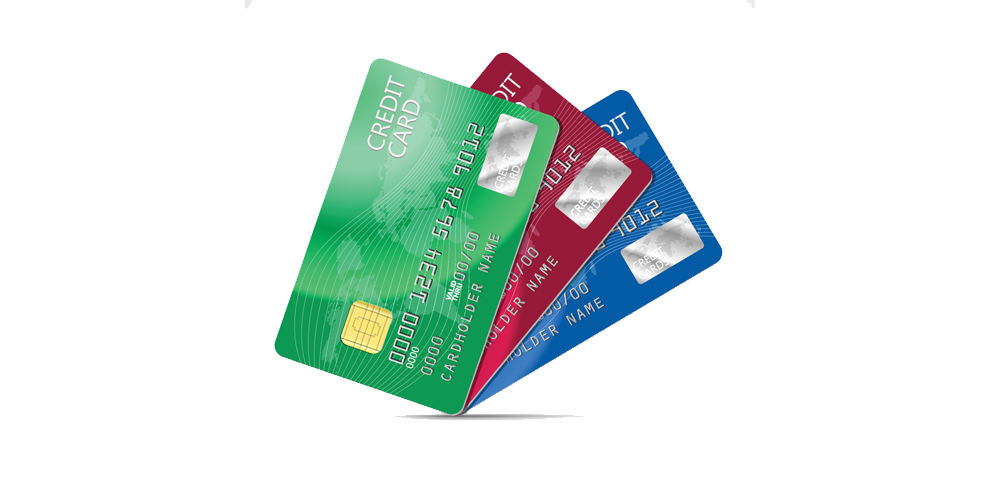In the intricate landscape of modern finance, a strong credit score is more than just a number; it’s a vital passport to financial opportunity. It influences your ability to secure favorable interest rates on loans, qualify for mortgages, rent apartments, and even impacts insurance premiums and employment prospects. While often misunderstood or feared, credit cards are, in fact, one of the most powerful and accessible tools available for building and maintaining an excellent credit score.
However, their effectiveness hinges entirely on responsible usage. Simply owning a credit card isn’t enough; it’s how you manage it that truly counts. This comprehensive guide will demystify the process, outlining the key strategies for leveraging your credit card to cultivate a robust credit score that opens doors to a world of financial possibilities.
Understanding the Foundations: What Makes Up Your Credit Score?
Before diving into strategies, it’s crucial to understand the primary components that credit scoring models, like FICO and VantageScore, consider when calculating your credit score. Credit cards directly influence several of these crucial factors:
- Payment History (35%): This is the most significant factor, reflecting whether you pay your bills on time.
- Amounts Owed / Credit Utilization (30%): This measures how much credit you’re using compared to your total available credit.
- Length of Credit History (15%): The longer your accounts have been open and in good standing, the better.
- New Credit (10%): This considers recent credit applications and newly opened accounts.
- Credit Mix (10%): Reflects the different types of credit accounts you manage (e.g., revolving credit like credit cards vs. installment loans like mortgages or car loans).
By strategically managing your credit card, you directly influence 75% of your credit score (Payment History and Amounts Owed), and indirectly impact the remaining factors over time.
Strategy 1: Always Pay Your Bills On Time (Payment History – The Cornerstone)
Why it matters: Your payment history is the single most impactful factor in your credit score. Lenders want to see a consistent track record of responsible payments because it’s the strongest indicator of your future payment behavior. Even one late payment (typically 30 days or more past due) can significantly damage your score and stay on your report for up to seven years.
How to implement:
- Automate Payments for the Full Balance: This is the golden rule. Set up automatic payments from your checking account for the full statement balance. This ensures you never miss a due date and, crucially, avoid accumulating interest charges.
- Set Up Reminders: Utilize calendar alerts, banking app notifications, or text message reminders from your credit card issuer to ensure you’re aware of upcoming due dates, even if you have auto-pay enabled. It serves as an extra layer of protection.
- Consider Paying More Than Once a Month: If your budget allows, making multiple payments throughout the billing cycle (e.g., once a week or after each major purchase) can help keep your balance low and prevent you from accidentally overspending towards the end of the month.
- Communicate with Your Issuer (If Needed): If you foresee an unavoidable delay in payment, contact your credit card issuer immediately. While they may not always prevent a late mark on your report, they might waive a late fee as a gesture of goodwill.
Strategy 2: Keep Your Credit Utilization Low (Amounts Owed – A Key Ratio)
Why it matters: Your credit utilization ratio is calculated by dividing your current credit card balance by your total available credit limit. For instance, if you have a $500 balance on a card with a $1,000 limit, your utilization is 50%. A high utilization ratio signals to lenders that you might be a high-risk borrower who is overly reliant on credit. Experts generally recommend keeping your credit utilization below 30% across all your cards, and ideally below 10% for optimal scores.
How to implement:
- Pay Down Balances Before the Statement Closing Date: The balance reported to credit bureaus is typically the balance on your statement closing date. By paying down your balance before this date, you ensure a lower balance is reported, even if you plan to pay the full amount by the due date.
- Make Multiple Payments Throughout the Month: As mentioned earlier, this not only helps with budgeting but also ensures that the balance reported to credit bureaus remains low, positively impacting your utilization ratio.
- Don’t Max Out Your Cards: Even if you intend to pay the full balance, charging close to your credit limit can temporarily hurt your score until the payment is reported.
- Request Credit Limit Increases (Strategically): If you have a history of responsible credit use and a strong credit score, asking your issuer for a credit limit increase can lower your utilization ratio (assuming you don’t increase your spending). This boosts your available credit without increasing your debt.
Strategy 3: Build a Long Credit History (Length of Credit History – The Test of Time)
Why it matters: Lenders prefer to see a long and consistent history of responsible credit management. This factor looks at the average age of all your credit accounts and the age of your oldest account. A longer history demonstrates reliability and experience in handling credit.
How to implement:
- Keep Your Oldest Accounts Open: Even if you have a credit card you no longer use frequently, keeping it open (and using it periodically for small, easily paid-off purchases to keep it active) can significantly contribute to the average age of your accounts. Closing an old account removes its history from your average.
- Start Early and Be Consistent: The sooner you begin building your credit history responsibly, the better. Patience is key, as this factor improves naturally over time.
- Consider Becoming an Authorized User: If you’re new to credit, having a trusted individual (like a parent or guardian) add you as an authorized user on their well-managed, long-standing credit card can help establish your credit history, as their positive payment history may be reported on your credit report.
Strategy 4: Diversify Your Credit Mix (Credit Mix – Showing Versatility)
Why it matters: Credit scoring models like to see that you can responsibly manage different types of credit. This typically refers to a mix of revolving credit (like credit cards) and installment loans (like student loans, car loans, or mortgages). A diverse mix demonstrates your ability to handle various financial commitments.
How to implement:
- Don’t Rush It: This factor is a relatively small percentage of your score and generally develops organically as you acquire different types of debt over your lifetime (e.g., a car loan followed by a mortgage).
- Focus on Need, Not Just Mix: Don’t take out loans you don’t need simply to improve your credit mix. This can lead to unnecessary debt. Instead, focus on managing your credit cards well and, when the time comes for larger purchases, consider a loan if it aligns with your financial plan.
Strategy 5: Be Mindful of New Credit Applications (New Credit – Strategic Growth)
Why it matters: Each time you apply for new credit, a “hard inquiry” is placed on your credit report. These inquiries can temporarily lower your score by a few points and remain on your report for up to two years (though their impact typically diminishes after a few months). Furthermore, opening too many new accounts in a short period can signal to lenders that you’re desperate for credit, which can be viewed negatively.
How to implement:
- Apply Strategically: Only apply for new credit when you genuinely need it and when your credit score is in good standing. Evaluate whether the benefits (e.g., a lucrative sign-up bonus, a lower APR, specific rewards) outweigh the temporary dip in your score.
- Space Out Applications: Give your credit score time to recover between applications. A general guideline is to wait at least six months, or even a year, between applying for new credit cards.
- Use Pre-qualification Tools: Many credit card issuers offer pre-qualification or pre-approval tools that allow you to see if you’re likely to be approved without a hard inquiry on your credit report. This helps you gauge your eligibility before committing to a full application.
Getting Started: For Those With No Credit
If you have no credit history, getting your first credit card can be challenging. Consider these options:
- Secured Credit Cards: These require a security deposit that typically becomes your credit limit. They are designed to help you build credit responsibly and often graduate to unsecured cards over time.
- Student Credit Cards: Tailored for college students, these often have lower credit limits and are more accessible.
- Authorized User Status: As mentioned in Strategy 3, becoming an authorized user on a trusted individual’s well-managed account can be a good starting point.
Conclusion
Your credit card is a powerful financial tool. When understood and managed with discipline, it can be your most effective ally in building a strong credit score. By consistently paying your bills on time, keeping your credit utilization low, allowing your credit history to mature, diversifying your credit responsibly, and making strategic application decisions, you will steadily cultivate a robust credit profile. A strong credit score is not just a number; it’s a testament to your financial responsibility, opening doors to greater opportunities and a more secure financial future.




